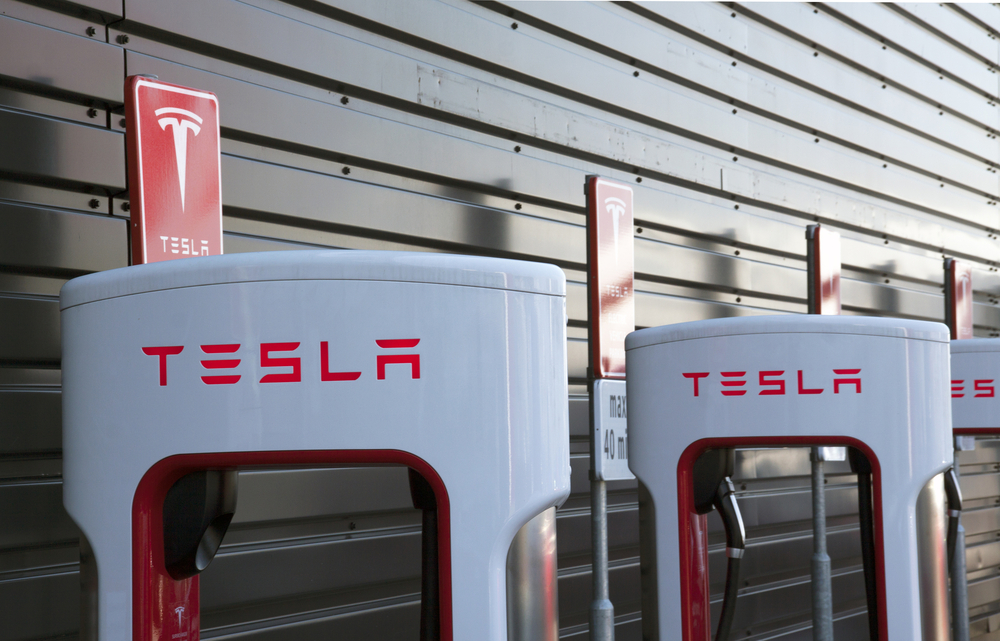“It always seems impossible until it is done,” once said Nelson Mandela. Tesla (TSLA) is not the first company to design and manufacture electric vehicles, clean energy storage solutions and solar panels, but it is the first to do it successfully, profitably, in scale, and with products that converge key technologies. Later this summer the company will celebrate its 20th anniversary, having been founded in July 2003. Now a young adult, the company at the beginning of the month unveiled its third masterplan. At the event, Tesla renewed its commitment to disrupt and accelerate the transformation of two of the largest industries on the planet: energy and transportation.
Tesla’s Investor day on March 1, seven years after the previous Master Plan reveal
The company released its much anticipated “Master Plan 3” that Elon Musk had promised would represent “the path to a fully sustainable energy future for Earth.” At its Texas gigafactory, the event showcased the full force of Tesla’s impressive management team. The company’s key leaders all presented on various topics, which also served to indirectly put to rest the concerns over Musk’s time spent on Twitter. Despite the emphasis management put on efficiency gains, productivity and profitability, markets reacted negatively to the event and Tesla’s shares were down 6% the day after.
The event was a four-hour long presentation, starting with Tesla’s view on how our economies can move away from fossil fuel. A “clear path to a fully sustainable planet” with calculations on how the new energy economy could be achieved was the focus of the beginning of the presentation. In Tesla’s view, the masterplan would require 240 TWh of storage, 30,000 GW of renewable power, $10 trillion of manufacturing investments, 0.2% of the planet’s land and no insurmountable resource constraints to achieve this new economy.
The highlights of the investor presentation also showcase management’s renewed commitment to reaching a 20 million EV production level, the confirmation of a new facility in Mexico, and the launch of a lower price point vehicle. Markets did not seem to like the lack of details on price points and dates for the price competitive model, again showcasing that news that does not translate into likely short term cash flow will be deeply discounted.
At the same time, oil majors report record 2022 earnings, and Europe’s BP is ‘Back to Petroleum’
At the same time that Tesla is painting the path to a sustainable future, oil majors are reporting record earnings. The coexistence of “green growth and brown value” may seem like a contradiction; however, the energy transition is absolutely inevitable, but will not be orderly. Before we significantly reduce our demand for fossil fuel we are seeing the supply reduction cause a spike increase in commodity prices and therefore profits. Record profits in 2022 by the oil & gas majors has changed capital budgeting decisions for the worse. This includes Shell ($40 billion profit), Exxon ($56 billion), and Chevron ($36.5 billion, more than double its 2021 profit). The UK based BP ($28 billion ) recorded its highest net income last year, above the $26 billion profit back in 2008, with CEO Bernard Looney reversing the strategy he announced three years ago.
“Beyond Petroleum” is reversing to “Back to Petroleum” as the CEO announced it will scale back the plan to decrease oil production. The previous plan was for 2030 production to be 40% below that of 2019; the reduced target is 25% (at 2 mmbd). Although still claiming to have a path to NetZero by 2050, the 2030 emissions from fuels sold to customers is likely to be 20% to 30% lower at the end of the decade, as opposed to previous reduction target of 35% to 40%.
Two large economies showcase how we are clearly moving towards the acceleration of energy transition
China’s 2022 solar numbers are out, and a 2023 outlook for new installations was revealed. A solar manufacturing association shared a revised outlook for the Chinese market in February. In 2023 China is expected to add between 95 GW to 120 GW of new solar power, after adding ca. 87 GW of new solar installations in 2022. It’s important to emphasize that distributed solar power accounted for most of the new installations, and total solar capacity operating in China is now ca. 393 GW (compared to the US that currently has ca. 97 GW).
China’s renewable-based electricity in 2022 reached roughly 32% of the country’s total electricity consumption, and 76% of all new installed capacity added to the grid in the year was renewable. When a grid passes the 50% mark in solar and wind penetration, its need for long duration energy solutions (LDES) become fundamental. China’s clean energy storage sector is already showing signs of fast growth.
German and Indian PMs met this month in Asia, and a green agenda was a top priority. The G20 finance meeting that took place in India was marked by concerns on the war in Ukraine, which completed its first anniversary this month. The discussions between Chancellor Olaf Scholz and PM Modi were important ones, with a heavy focus on the energy transition. Germany announced a €10 billion package over the next eight years to help India reach its target of 500 GW of renewable capacity, part of an Indo-German partnership for green and sustainable development. In 2022, India installed 15 GW of new solar capacity in the country, reaching a total solar installation capacity of 67.6 GW with 52.3 GW of solar pipeline at various stages of development. Renewable sources now account for 121 GW of India’s 411 GW power generation capacity.
The energy transition may seem impossible, but it is being done, as Tesla and various countries around the world are showing us.
The views and opinions expressed herein are the views and opinions of the author and do not necessarily reflect those of Nasdaq, Inc.
Image and article originally from www.nasdaq.com. Read the original article here.

